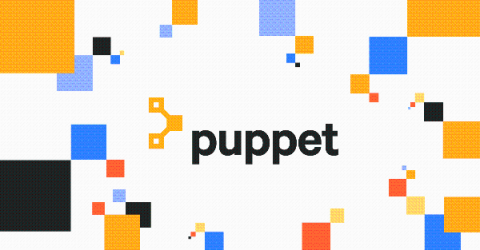Operations | Monitoring | ITSM | DevOps | Cloud
Puppet
A Platform to Automate All The Things
In my seven months at Puppet, I continue to be amazed at the opportunity we have to drive value in some of the biggest companies and institutions in the world. Automation is no longer a nice to have -- it’s a must. As more companies further their cloud strategies to include cloud-native infrastructures, the complexity increases, making automation indispensable.
Puppet and Relay: The Future of Hybrid Cloud Automation
Over the past year, we’ve talked to people building and operating the next generation of applications. Across the map, we saw cloud-native applications built upon an ever-increasing number of public cloud infrastructure APIs, tools, and managed services. Modern infrastructure lets anyone create automation, not just a few gatekeepers. This shift is powerful, but comes at the cost of complexity, which we built Relay to manage.
Puppet Invests in Platform Approach, Strengthens Self-Service Automation and Expands Automation Capabilities To More People in More Places
2020 State of DevOps Report Finds Link Between Self-Service Platforms and DevOps Success
2020 State of DevOps Report is here!
With only 49 days before this very long year comes to an end, we’re thrilled to announce the 2020 State of DevOps Report is finally here. We’re in our ninth year producing the State of DevOps Report; at this point, more than 35,000 technical professionals from around the world have contributed to this body of research, the longest-running and most widely referenced DevOps research in the industry.
Puppet Enterprise Fall release builds on added customer value
I’m excited to announce the release of Puppet Enterprise 2019.8.3. This release builds on a number of important product enhancements based on customer feedback and delivers on the second phase of our highly requested Value Dashboard.
Enabling faster Puppet Enterprise code deploys
The 2019.8.2 release of Puppet Enterprise has added a significant improvement to code deployment by enabling Puppet modules to be downloaded in parallel instead of serially. This functionality was added to the upstream r10k project almost a year ago and has now been added to Puppet Enterprise Code Manager.
Scheduling Puppet Plans in Puppet Enterprise
Puppet Plans were added in the 2019.2 release of Puppet Enterprise and Puppet Enterprise 2019.8.2 extends that functionality by adding support for scheduling Puppet Plans. This enables plans to be run at some point in the future or on a recurring schedule. Plans can be scheduled using the Puppet Enterprise console, Puppet Enterprise command line, or the Puppet Enterprise REST API. In this blog post we’ll walk through how to schedule a Puppet Plan in the Puppet Enterprise console.
Puppet's path to IPO and welcome to our new board members
We’ve had an exciting year here at Puppet, and although it’s not the year we could have expected, I’m encouraged and inspired every day by the resilience of our team, our commitment to each other, and our drive to help customers navigate through so much uncertainty and change.









